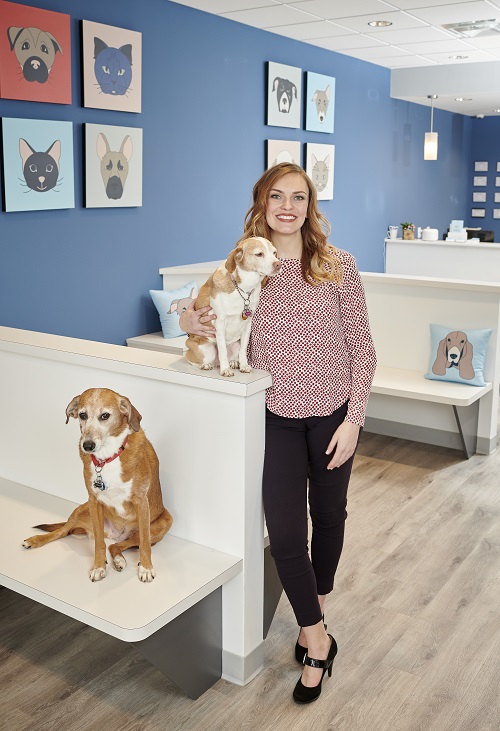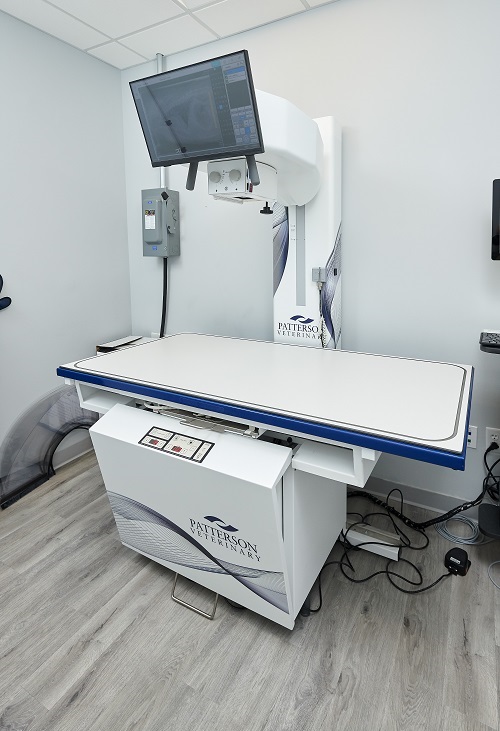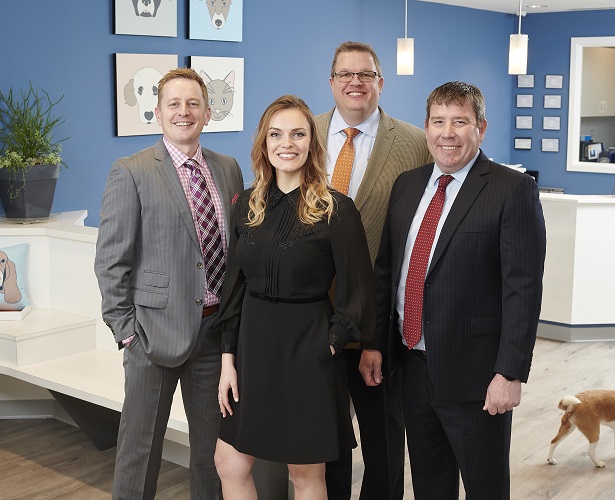
Digital X-ray Finds a Perfect Home in Urgent Care
A conversation with Matthew Fletcher, equipment specialist for Patterson on the veterinary side. He helped Dr. Veronica Jarvinen of EMMAvet Urgent Care select the Radmedix digital X-ray system for her practice. Here’s why.
“I cover four states in the Northeast, and I help veterinarians either invest in new equipment, design new hospitals and open their own practice, or remodel or expand existing practices.
“I’m with Dr. Veronica Jarvinen at EMMAvet, which is an urgent care facility. So much of what they do has a need for fast answers, whether that’s ruling out a problem for an animal that comes through the door or identifying a problem using an X-ray or ultrasound, so they can move on to the next part of the puzzle to create the treatment plan. In regards to X-ray, that’s why Veronica chose the top of the line direct-capture X-ray system.
It Started with Mammograms
“The Radmedix HD1717 DR is a system used in mammography. It’s made out of a selenium alloy as opposed to a silicon alloy, that as a result of the science has less light scattering in the process of acquiring the image. Therefore, there’s less blurring in the image, which means more detail as opposed to less detail.
“In Radiology, you truly get what you pay for. The receptor itself was a very important part of her getting the best quality image available, in the shortest period of time, in order to give the fastest answers and the best information possible within that timeframe. So that’s why she chose the selenium HD1717 panel.
The Workflow Works Throughout the Hospital

“Taking the X-ray happens within the X-ray room, which is protected according to code for radiation protection purposes. The Radmedix AccuVet software used is provided and supported by the same company providing the hardware – Radmedix LLC of Ohio – so it’s a one-stop-shop for the front and back end of usage and support. The software provides breed-specific exposure settings and image processing, making it super quick and user friendly. Just depress the foot pedal, expose the patient and in three seconds your images come up on the screen. It’s fast answers.
“The Radmedix AccuVet software is able to talk to a PACS (Picture Archiving and Communication System) server, which essentially then communicates with the practice management software she has, and that enables her to do a couple of things: It enables her staff to order an X-ray from any computer within the hospital that will show up on the X-ray screen without having to come and re-enter it here in the X-ray room. Likewise, if she wants to view the images anywhere else in the hospital, that same functionality with the software allows you to pull up those images to view anywhere else.
“It’s a pretty fast-paced way to make your workflow very functional and very quick so you’re not taking time to enter patient data again because you’ve already done it, whether it’s the exam room or in another location in-clinic. You can pull the images up anywhere else so you can show a customer in the exam room, without bringing them back into the X-ray room itself, which is within the medical space of the hospital and obtrusive to all.
Linking to Invoicing and Communicating With Practices

“The flip side of this connectivity is it links in with some of the billing that she wants to do. It allows the practice management software (PIMS) to track the X-rays that are taken. So, it’s a pretty intuitive and all-encompassing system in that regard when paired with her PACS and PIMS.
“She can DICOM-send (Digital Imaging and Communications) the original radiograph or email out any radiograph as a jpeg for a referral or radiology reading via the X-ray software itself, as well as from the PACs software, too.
Origin Story

“So, most equipment in vet, most of it, not all of it, is initially engineered for the human side. The selenium plate is the system that Radmedix had been providing into the human side both into orthopedic facilities as well as into facilities in the mammography field. They partnered with us a number of years ago now – it’s probably about eight or nine years now – to bring this superb panel into veterinary medicine.
“The feedback on the image quality has been second to none. Whether we’re upgrading somebody from an older system or whether it’s bringing somebody new into the DR direct X-ray technology, the feedback’s been fantastic.
Warranty and Loaner Panel

“An additional aspect to note is the way the hardware is manufactured. The system comes with a five-year warranty included, which is hardware, software and labor, including a next-day loaner panel if it ever needs to be repaired.
“Veterinarians can upgrade an existing table with our DR panels, whether it’s this HD1717 selenium option or one of our other DR panels. Or if they want to get a complete system, they can get the panel, the computer and a new Radmedix X-ray table, too. When the Radmedix DR panels are paired with the Radmedix X-ray table, they do get the ability to have a touch screen on the table’s tube head, as well as the computer that comes with the system, which is also a touch screen!
“When combined as a complete system, the other workflow advantage is it has presets for different breeds and sizes of animals that change the kVp and mAs exposure settings, without having to read a technique chart. It’s not a silver bullet, but it helps in 75% of instances to make the workflow quicker. You don’t have to touch anything other than make a quick selection of size, and then expose.
“It’s a very fast, quick, speedy, unique offering for a veterinary workflow. We’re pretty proud of it.”
We invite you to explore more about digital X-ray on our website, here!